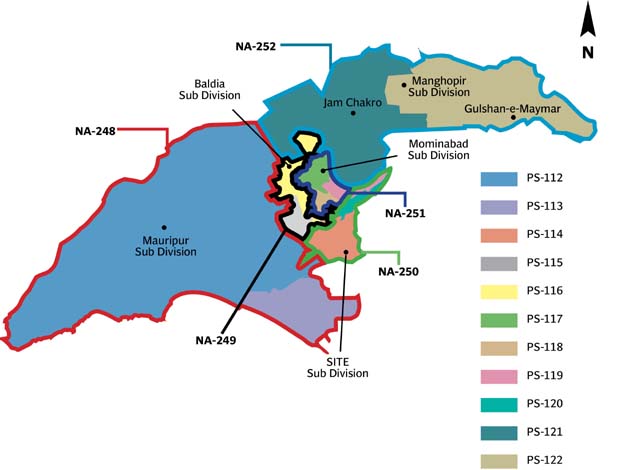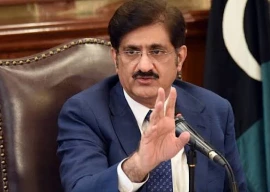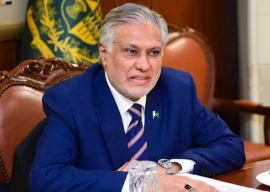
In the last general elections, the district comprised four National Assembly seats and eight Provincial Assembly seats. This time, the number has increased to five NA and 11 PS seats. The district has a total population of 3,914,757, of whom 1,600,057 are registered voters. On July 25, they will cast their votes in 3,564 polling booths, set up at 1,202 polling stations.
District West incorporates areas of Mauripur, Harbour, Baldia, SITE, Mominabad, Korangi and Manghopir sub-divisions.
Orangi Town residents cry foul over water crisis
These areas promise an exciting contest as candidates will try to woo voters from a diverse array of ethnic and linguistic backgrounds, including those who speak Urdu, Pashto, Balochi, Punjabi, Sindhi, Siraiki and Hindko. Moreover, the district is home to a sizable population of Bengali, Burmese and Afghan refugees and immigrants.
A large number of residents in Orangi Town include members of the Bihari community, who settled here after the split between East and West Pakistan in 1971. The shanty town is widely cited as the largest slum in Asia and also finds mention among the five largest slums in the world, according to the United Nations World Cities Report 2016. Much of the area is undocumented and longtime residents often complain of being forced to evacuate at the behest of the land mafia. Perween Rehman, a renowned urban planner and activist, was shot dead allegedly by the land mafia for attempting to document this part of the city through GIS mapping.
Baldia Town, another large township within the district, is home to a variety of ethnicities. For several years before the launch of the Karachi Operation, several parts of the town had almost become no-go areas due to the presence of the Tehreek-e-Taliban Pakistan.
On the other hand, Banaras and SITE largely Pushtoon-dominated areas, while Harbour and Keamari towns have a mixed populations of Baloch and Pushtoons.

Another large slum development, the Machar Colony on Mauripur Road, is home to a large Bengali and Burmese population. In all, District West is a blend of urban and rural settlers residing in varied landforms, including hills, islands, agricultural plains and industrial zones. At its southern-most tip, the district features several of Karachi's most popular beaches and picnic points, including Hawkes Bay, Sandspit and Paradise Point.
The district is also one of the largest contributors to inland revenue, since it houses the city's largest industrial site, as well as the Karachi Port, Oil Terminal, Deepwater Container Terminal and Fish Harbour. Valeeka Textile Mill, the largest factory in the district, was inaugurated by Quaid-e-Azam Muhammad Ali Jinnah.
While the district has largely been peaceful for the past couple of years, it does have a history of violence, gunfights, gangs and ethnic violence. Hundreds of people were killed in the Aligarh Colony massacre on the night of December 14, 1986, in what turned out to be an ethnic clash.
Two years on, Karachi DMC West gets its elected chief
Until 2013, Orangi Town was the worst in terms of law and order, with targeted killings, ethnic clashes and incidents of terrorism claiming almost two dozen lives on some days. Two MPAs elected from the district have been killed in firing incidents. The district saw its worst on September 11, 2012, when 259 labourers were killed in a factory fire in Baldia Town.
Despite being one of the highest contributors in terms of revenue, the district shamefully lacks in the provision of basic amenities for its citizens. Residents of Orangi and Baldia towns must face acute shortages of water, while public hospitals, schools and universities are almost non-existent.
For the past three decades, most constituencies making up this district have voted to power candidates of only one party - the Muttahida Qaumi Movement-Pakistan. The exception to the rule has been Pakistan Muslim League-Nawaz's Aijaz Shafi, who even beat Pakistan Tehreek-e-Insaf chief Imran Khan to win the 1993 and 1997 elections from the constituency comprising areas of Keamari and Baldia Town. The other exceptions were Muttahida Majlis-e-Amal's Qari Gul Rehman, who won the Keamari-based NA-239 constituency and the Pakistan Peoples Party's Abdul Qadir Patel, who won the seat in 2008.






1726054615-0/OpenAI-(2)1726054615-0-270x192.webp)











COMMENTS
Comments are moderated and generally will be posted if they are on-topic and not abusive.
For more information, please see our Comments FAQ